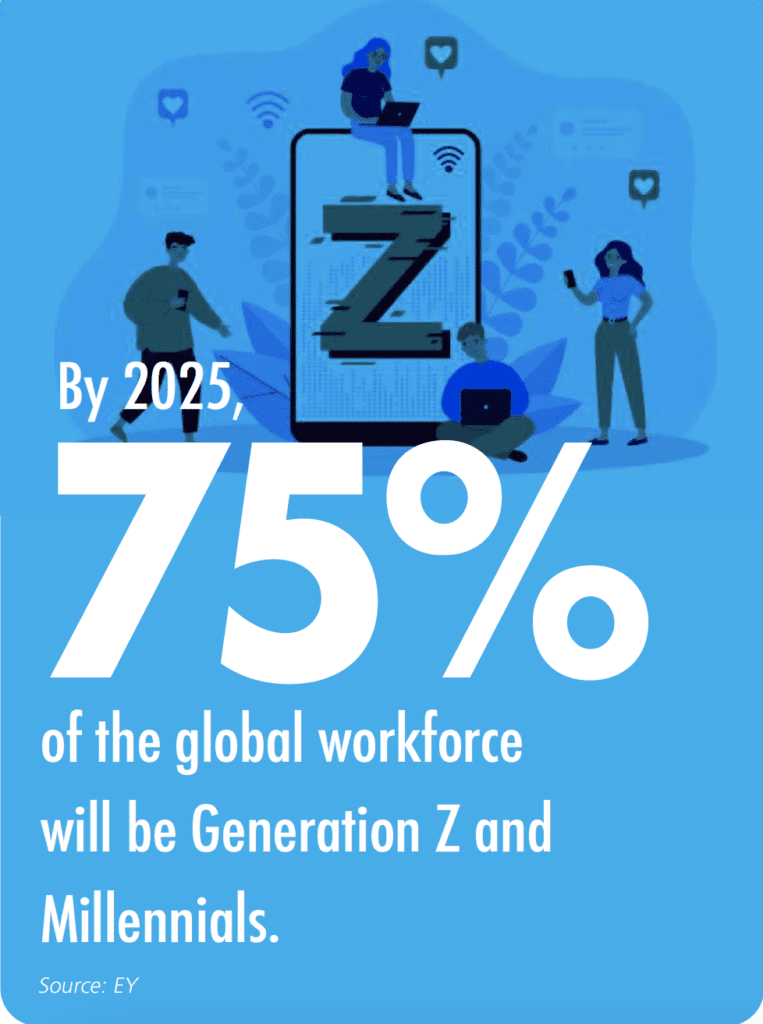Strategies to develop a holistic workforce strategy to attract younger talent and contingent workers.
By Vish Baliga
The pandemic has challenged companies to rethink their workforce strategies in profound ways, particularly with respect to remote work and gig opportunities. Almost overnight, companies were required to enforce work-from-home policies for most of their workers. And well into 2021, this trend continues. Much of the U.S. has become a work-from-home economy, with over 42% of the workforce now working from home or a remote location full-time. Many of the concerns associated with working from home have been addressed with the aid of new technologies and work practices. In fact, the pandemic-induced remote work environment has provided ideal conditions to validate the benefits of remote work for organizations, workers, and society at large.
This work-from-anywhere trend is playing out across the globe as regional hubs and countries take advantage of the challenges presented by the pandemic to attract individuals seeking alternative work environments. Within the U.S., many people have moved to Miami and Austin for the attractive lifestyle and economic benefits. In Hawaii, a few hotels offer “workcation” discounts to live and work. There is also the emerging popularity of WiFi-equipped RVs offering an alternative for those seeking to work remotely. Tech-savvy Generation Z and millennial employees are increasingly embracing such opportunities. Gen Z and millennials are changing the world of work by leaning into the gig economy and choosing fixed-term projects with flexible locations over traditional jobs.
Arguably, this is the first time a large segment of the workforce has strongly prioritized the need to balance their work and lifestyle choices over other criteria while seeking work. Considering that by 2025, three-quarters of the global workforce will comprise Gen Z and millennials, it’s now more important than ever for companies to reevaluate their employer branding strategies, including how they attract younger talent and how they continue to engage and inspire them.
An Untapped Resource

The pandemic has challenged countless businesses with unpredictable fluctuations in supply and demand, which made traditional workforce planning practices ineffective. Many businesses in industry sectors such as retail, healthcare, manufacturing, and logistics have had to rely increasingly on external contractors: workers who have the right skills to do the work, often at lower cost and with higher mobility. In the post-pandemic world, the increased demand for contingent labor is expected to continue, providing more opportunities for digitally native Gen Z and millennial workers seeking flexibility in their jobs. Many specialized human talent clouds are emerging to connect organizations with contractors seeking alternative work engagements. At the same time, organizations are seeking visibility across their traditional employee base and extended talent pool of external workers to optimize workforce decisions.
Preparing for the Future
According to the 2020-2021 CXC Contingent Workforce Global Trends Report, 77% of executives believe that freelance and gig workers will substantially replace full-time employees within the next five years. Organizations need to be open to tapping the highly skilled Gen Z and millennial talent pool by including flexible work in their workforce planning initiatives. Leading HR organizations are making the future of work a strategic initiative by embracing holistic workforce strategies that include both full-time employees and contingent workers, and by establishing mature contingent workforce management programs that complement existing HR solutions.
Embracing the gig workforce also requires listening to the needs and motivations of younger workers and becoming a brand that values them for their contributions to the business. Organizations can do so by:
- offering flexible work arrangements;
- promoting collaboration by providing the necessary tools and technology to ensure contingent workers are connected to the rest of the workforce;
- building a culture that is grounded in openness and transparency and that values and celebrates all categories of workers;
- committing to diversity, equity, and inclusion (DEI) programs, setting real targets, and taking action;
- managing brand reputation among the community; and
- providing mentorship programs that allow for genuine two-way feedback and offer learning and professional development for full-time and contingent employees alike.
For Gen Z and millennials, the proverbial 40-hour fixed work week with long-term benefits does not have the same appeal as it did for previous generations of the workforce. Their choice of work is increasingly influenced by their desire to find purpose-driven work while balancing lifestyle needs. With many companies choosing to adopt a remote or hybrid workplace model, Gen Z and millennials are closer to the work experiences they always wanted. Organizations that are rapidly adopting tools and processes to promote remote work and including flexible work arrangements as part of their workforce strategy will be best positioned to redefine the future of work and reap its greatest benefits.
Vish Baliga is chief technology officer of SAP Fieldglass.














